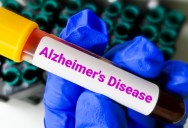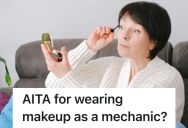New Theory Could Be A Turning Point For Alzheimer’s Research
Alzheimer’s Disease is a heartbreaking diagnosis for thousands of families every single year, and although the research has a good amount of funding behind it, no cure has been found.
This new theory, though, could change everything.
Even though there hasn’t been a cure found, there have been promising and considerable advancements as far as drug treatments, therapies, and tests that could diagnose it earlier than ever.
This new theory suggests that a dance between two proteins could indicate a “mechanical basis” of Alzheimer’s disease. The paper, written by an international team of authors, claim to have developed a six-pronged hypothesis for how a protein called talin could work with amyloid precursor protein (APP) to become a vital mediator in the development of Alzheimer’s.
They believe this could be a possible target for drugs in the future.
Dr. Ben Goult, a cell biology professor at the University of Liverpool, has been working on theories regarding the talin protein for the past several years.

He spoke with IFLScience recently about their findings.
The molecule has the ability to switch between two stable shapes, which he believes could be encoded the way a computer uses binary switches – one talin shape being the 0 and the other the 1.
Based on that work, he and his team think that talin might not only be used in writing memory, but it its loss to Alzheimer’s.
“The key steps on the way were showing experimentally that talin does bind APP and when we modelled APP to scale. If you look at this video we made, it’s all drawn to scale using full-length proteins, and you can see immediately what is going on.”
His team set out to systematically assess different proteins’ effects on APP.
“When you look at the data, talin has just about the biggest effect on APP processing out of all proteins! So combined with our work on talin as a memory molecule and the MeshCODE, I realized this was all starting to fit together, then I started to write this new paper. As it all started to fit together it was really amazing, and seeing the genetic data and the biochemical data all fit together made the last couple of months of writing this incredibly exciting.”
They think the APP proteins could sit in a place that mechanically connects the two sides of a synapse. When the APP is processing correctly, it maintains the synchronicity of the synapse.

When it goes wrong, the corruption of the “code” could lead to symptoms of Alzheimer’s. It could spread through the brain on these 1s and 0s the way a virus corrupts a hard drive.
“This study provides a new idea for what APP might be doing in healthy neuronal functioning. And that when this goes wrong you get defects in mechanical homeostasis, and this can lead to problems.”
Given that this theory fits with our current understanding of Alzheimer’s pathology, and the role that misfolded plaques play in patient’s brain anatomy, Goult hopes this could identify “a number of possible new ways to treat Alzheimer’s or at least to diagnose it earlier.”
These are just theories for now, but Goult and his colleagues are hoping to jump from labs to animal experiments in the near future.
And then there’s the sixth part of the hypothesis: that it could be possible to slow the spread of Alzheimer’s with drugs that already exist. Specifically, drugs that stabilize focal adhesions in cancer patients.
Focal adhesions are large bits of protein that connect the inside of a cell to its outside environment. There is previous data that suggests there could be a link between the stability of focal adhesions and the stability of the APP at they synapse.

So, could the drugs that stabilize focal adhesions be able to stabilize the APP in the brain, too? Maybe even prevent the breakdown that leads to Alzheimer’s?
“It’s really cool working on the individual proteins and how they work, look and interact as it can lead to completely new ideas that scale through all the levels of explanation from complexes to synapse to neurons to a whole brain. With a bit of luck this new data and the hypotheses that arise from it can accelerate new ways to treat this disease.”
Great news for anyone facing this diagnosis, or for anyone who loves someone who is facing it.
This disease has been a scourge for decades; it seems like the time is right to finally kick it all the way to the curb.
If you enjoyed that story, check out what happened when a guy gave ChatGPT $100 to make as money as possible, and it turned out exactly how you would expect.

Sign up to get our BEST stories of the week straight to your inbox.




